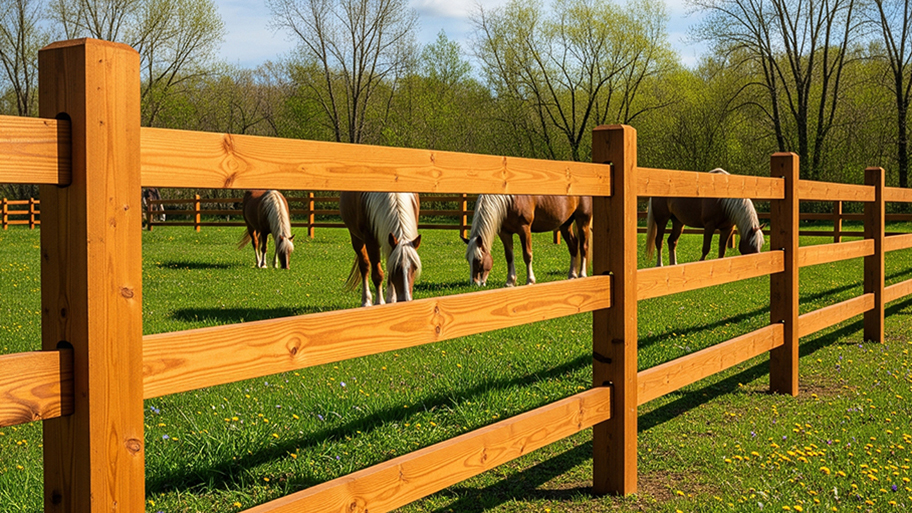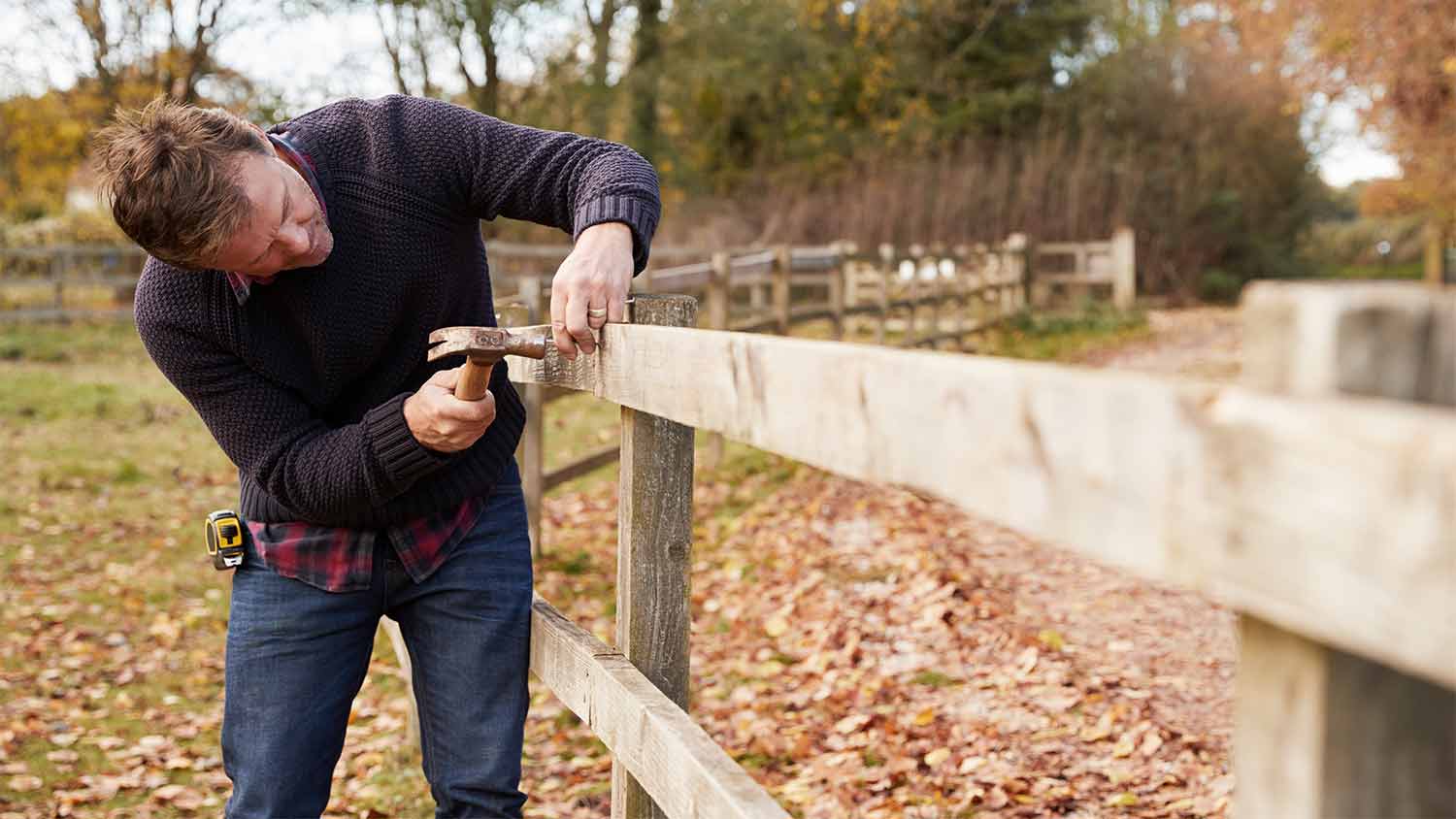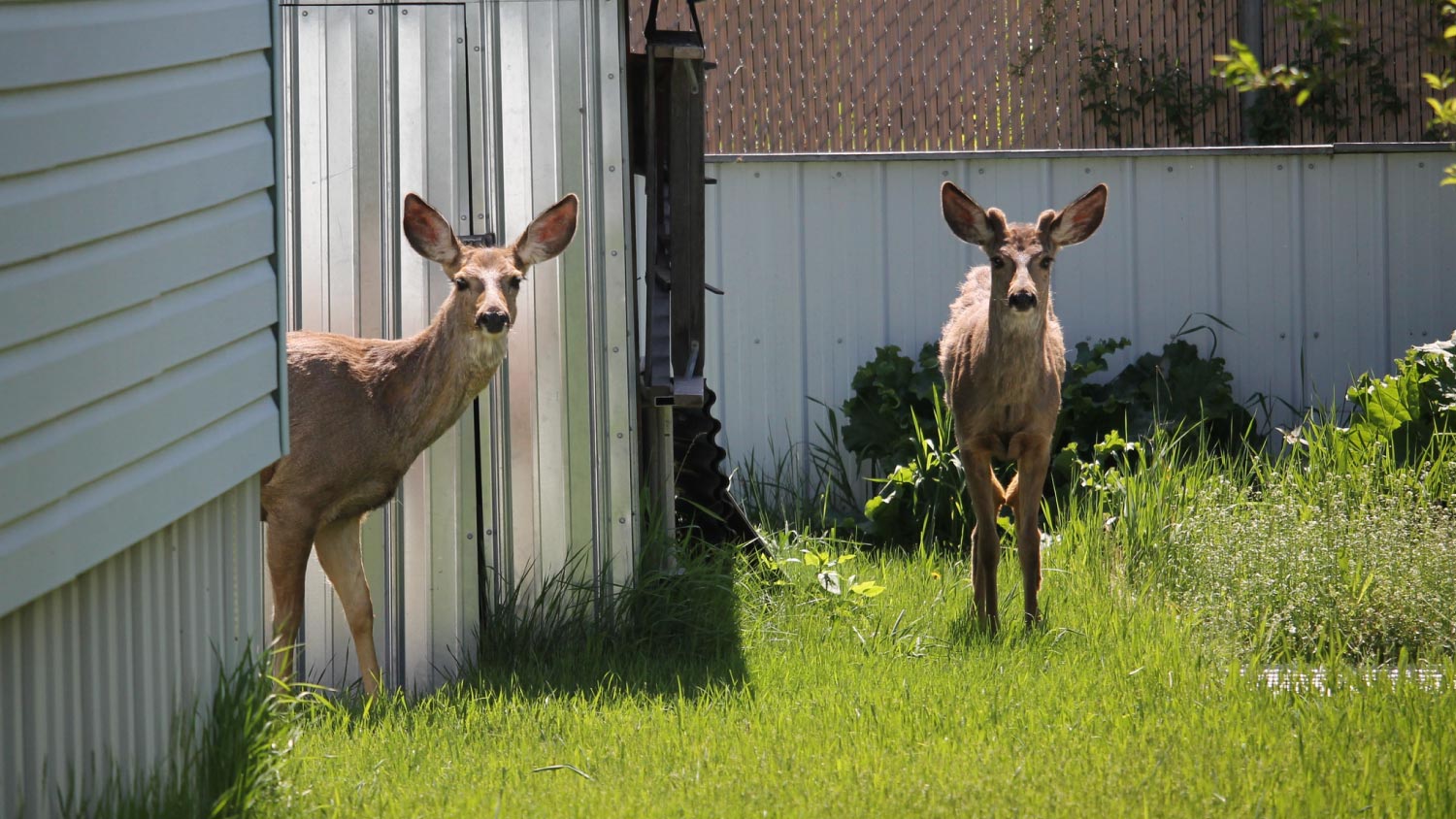
Looking for that rustic charm only a split rail fence can provide? Use this split rail fence cost guide to get an idea of what your fence will total.
Keep your fence from going off the rails


A loose or wobbly fence post may seem like no big deal—there are other posts to support the fence, right? However, a loose post can threaten the integrity of an entire section, and if you don’t fix it (or call a pro in ASAP), you could end up spending far more to replace the whole fence. Instead, grab a shovel and learn how to fix a loose fence post like a pro.
To restore your fence post, you’ll need to use a shovel to dig out the soil around the loose fence post. Continue digging until you reach the existing fence post base, which will likely be made of concrete.

Use a level to determine the right positioning for the fence post. Once the post is level, place a two-by-four wood plank at an angle from the top of the post to the ground, then drill the brace into a stake in the ground. This will stabilize the post as it dries.
Follow the instructions on your concrete or post foam product to mix.
For concrete, open the bag and pour the dry concrete mix into a wheelbarrow. Use the garden hose to add water, occasionally stirring with a shovel until it reaches a consistency similar to crunchy peanut butter or oatmeal.
To activate the foam product, break the seal on the pouch, then rub the closed pouch across a flat surface to mix it. Continue mixing for about 20 seconds. Cut open the pouch when you’re ready to pour it into the concrete hole.

Next, shovel in the concrete mix or pour in the foam. The foam will expand as you pour it into the post hole. For the concrete, continue adding more of the wet concrete until it’s 1 inch from the surface.
Follow the instructions on the concrete or foam product label for how long the material needs to dry. Concrete will start to harden within 20 to 40 minutes, but wait at least 10 hours before reattaching the fence or adding any other weight to the fence post. Foam will harden within a few minutes of applying, but wait at least a few hours for it to cure before adding weight.
Finally, cover the fence post base with the soil you removed earlier. Plant grass seed, install sod, or add other decorative plants to finish the job.
Repairing a loose fence post is a simple DIY task, but there are some beginner mistakes to watch out for.
Working too slowly: If you opt for foam, make sure you work quickly. Foam can harden in just a few minutes, so double-check that your fence post is level before leaving the foam to dry.
Not leveling the fence post: Don’t just eyeball whether the fence post is straight. Use a level to ensure the fence post won’t be leaning after the concrete or foam dries.
Watering too close to the post: After adding soil and grass or plants, avoid getting the fence post wet to prevent the post from rotting.
Repairing a post that’s too far gone: A leaning post sometimes needs a fresh base for stability, but don’t ignore a rotten, warped, or otherwise damaged post. Consider whether repairing or replacing the fence post will be the right fit for a long-lasting fence.

To fix a leaning fence post, make sure to work on a mild, dry day when the threat of freezing overnight is gone. Ideally, late spring through early fall works best for this project, although you should fix a loose fence post ASAP to avoid structural damage to your fence. Here are the best conditions for fixing a loose fence post:
The daytime temperature should be 50 to 90 degrees Fahrenheit.
The overnight temperature should be above 40 degrees Fahrenheit but ideally higher than 50 degrees Fahrenheit.
The forecast should be clear of rain.
The cost to repair a fence post yourself adds up to around $150, although costs can range from around $50 to $250 depending on how much concrete or foam you need and how many posts you’re fixing. The biggest expense is the fill material. You’ll spend $10 to $30 for two 50-pound bags of concrete or $15 to $30 for each pouch of foam.
While it may take a DIYer about six hours to finish fixing one loose post, a pro can get the job done in about one or two hours. Hiring a pro costs $150 to $400 to fix one fence post. So, who do you call to fix a fence post? Leave this project to a fencing pro near you so that you can get your Saturday back.
From average costs to expert advice, get all the answers you need to get your job done.

Looking for that rustic charm only a split rail fence can provide? Use this split rail fence cost guide to get an idea of what your fence will total.

Pool fence costs depend on the type of fencing and the size of your pool. This guide will help you figure out the true cost of pool fence installation.

Chain-link fences are among the most affordable options available. Use this chain link fence cost guide to see what your fence installation will total.

Unsure who to hire to install a wrought iron fence? Compare fence contractors and ornamental iron pros, see how installation works, and choose confidently.

Whether you’re looking to replace your chain link fence or just want it gone, find out how to remove a chain link fence here.

Discover the cost of deer fence installation. Learn about average prices, key cost factors, and tips to save on your deer fence project.